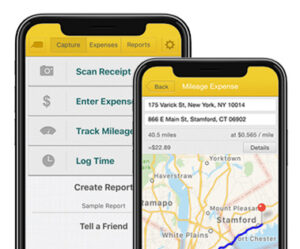5 Ways to Maximize Finances in Small Businesses
Table of Contents

Today’s business landscape is mainly comprised of small enterprises. Here in the US, 99.9% of businesses fall under this category, which equates to 33.2 million registered entities in 2022. As more small businesses pop up each month, challenges to profitability also become more common. This is due to factors like ineffective expense tracking and compliance requirements that can be handled easier by their larger counterparts.
You can employ financial strategies like budget planning and starting a rewarding system to get your business on the right track. Combine this tactic with using the latest technologies to help ensure that your business has the best chances toward growth. With the aid of today’s innovations, small businesses can optimize operations, control costs, and make informed financial decisions. This is where a tool like a mileage tracker app can be beneficial, as it can improve expense tracking and maximize tax deductions. It’s a powerful program that you may include in your master plan on how to make your enterprise profitable.
That said, it’s just one approach to growing your venture. Here are five other ways to maximize finances in small businesses:
Automate Business Processes
Automation tools and software solutions can streamline repetitive and time-consuming tasks. It improves efficiency as it reduces the need for manual labor. You may automate processes like expense tracking and reporting, inventory management, invoicing, and bookkeeping. Increased efficiency leads to cost savings, as fewer resources are required to accomplish the same amount of work. It allows you to focus instead on growth-oriented initiatives as you won’t need to handle boilerplate tasks.
Human errors, which can be costly for businesses, can also be avoided. Automation reduces the likelihood of errors in tasks like data entry and calculations. By mitigating the chances of mistakes, small businesses can improve the quality of their products or services and avoid costly rework or customer complaints. High-quality output leads to increased customer loyalty and repeat business, positively impacting profitability.
Automation also enables small businesses to achieve higher productivity by speeding up processes. They can work around the clock, ensuring continuous operations and faster turnaround times. This increased productivity translates into faster order processing, service delivery, and receipt issuance.
Leverage GPS
GPS tracking systems can be used to monitor and manage a business’s fleet of vehicles – a business solution called fleet tracking. By equipping vehicles with GPS devices, businesses can track their location in real-time, optimize routes, and monitor driver behavior. This helps reduce fuel costs, minimize idle time, and enhance overall fleet management. It also contributes to asset security as it lets you set up alert systems in case of theft or unauthorized movement. This reduces the risk of loss and allows businesses to recover assets quickly. Efficient asset tracking helps prevent unnecessary replacement costs, insurance claims, and downtime, contributing to improved profitability.
Additionally, GPS helps optimize routes for field service personnel, minimizing travel time between appointments and increasing the number of service calls they can complete in a day. This improved efficiency leads to cost savings and a better revenue stream.
Take Advantage of the Cloud
By employing cloud services, businesses can access powerful computing resources, storage, and software applications without large upfront investments. This reduces capital expenditure and maintenance costs associated with on-premises infrastructure. By only paying for the resources they use, small businesses can optimize costs and allocate their budget more efficiently.
It also enables real-time asset tracking when combined with other technologies like GPS. You can track and transmit data about the location, status, and condition of your business assets. The cloud allows businesses to integrate and consolidate this data from multiple data sources and streams into a centralized platform, providing a holistic view of asset information.
Use Virtual Machines
Virtual machines enable remote work and collaboration by providing employees with access to their applications from anywhere with an internet connection. This flexibility allows businesses to stay in touch with personnel beyond geographical constraints and promotes collaboration among distributed teams.
At the same time, they can be used to centralize the management of data. That’s because virtual machines can be deployed in a number of ways, including for storage or desktop virtualization. One instance may be dedicated to employee management, while another may be used to store backups of tracking data such as start and end addresses as well as odometer logs. This centralized control simplifies administration tasks giving you more time to focus on important matters like optimizing cash flow.
Build and Monitor Data Analytics
Small enterprises can build and monitor data analytics to gain insights from their operational metrics and business trends. For instance, you may use the information to do forecasting and planning routes, thereby letting you predict mileage rates and maximize tax deductions. Using analytics can help identify growth opportunities, optimize processes, and enhance your decision-making.
Conclusion
To keep your business thriving and improve profitability, stay informed about emerging trends and innovations. Use that knowledge to improve different aspects of your business including expense tracking and asset management. Being adaptable and open to embracing technology allows you to adjust to changing market dynamics, ultimately maximizing your opportunity to grow.
Was this article helpful?
We are a team of writers and contributors with a passion for creating valuable content for small business owners, self-employed, entrepreneurs, and more.
Feel free to reach out to use as support@falconexpenses.com





